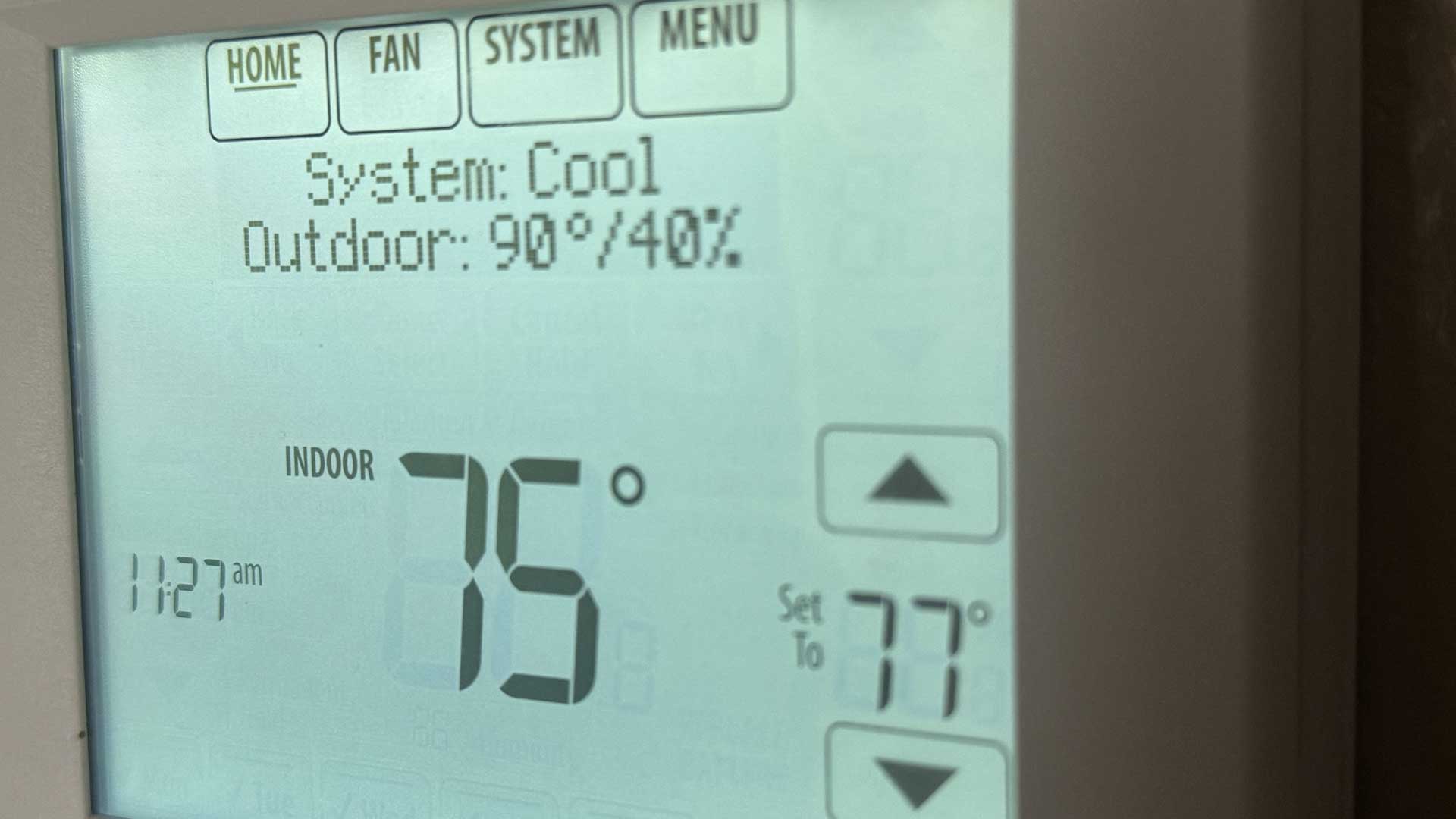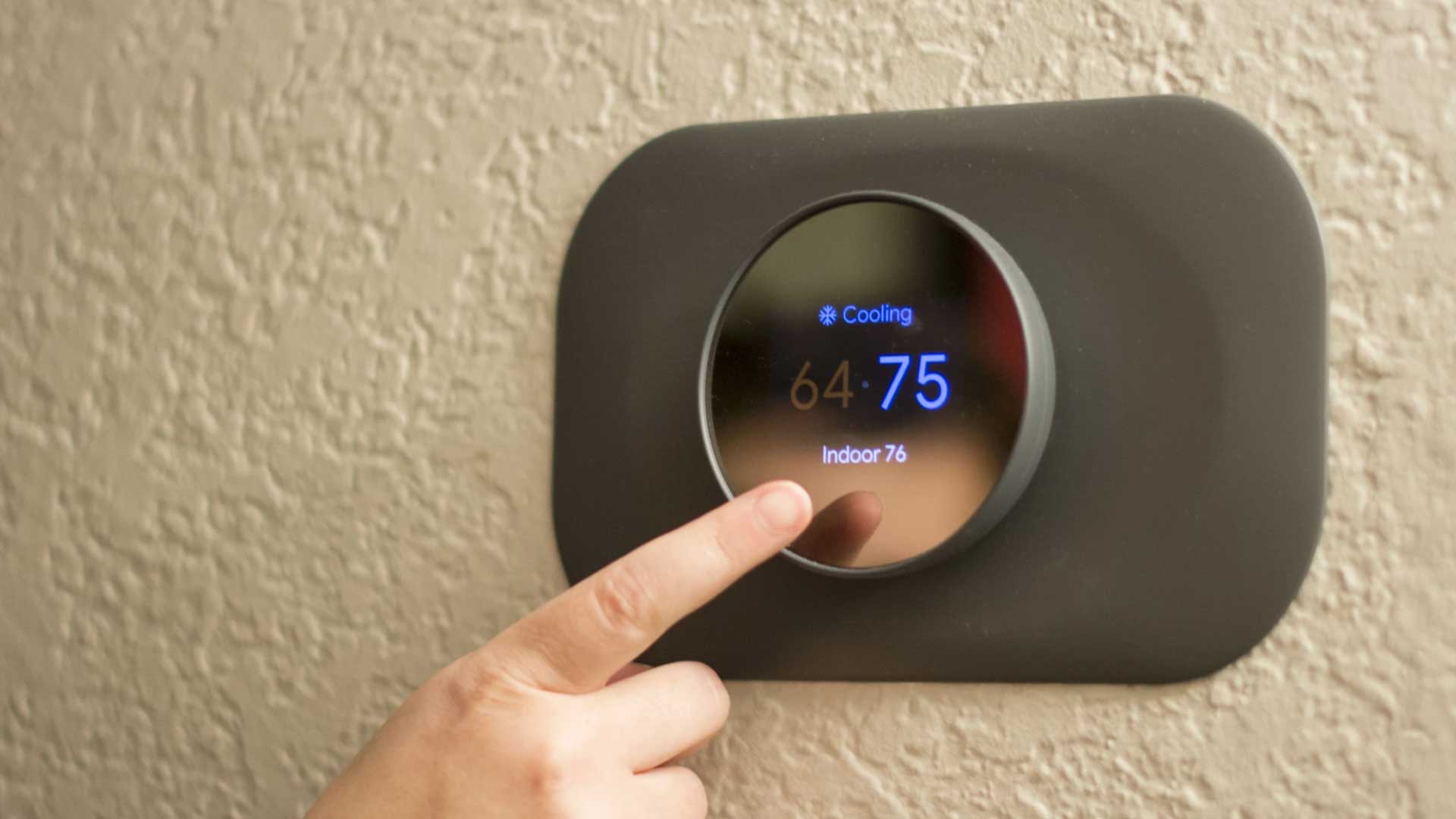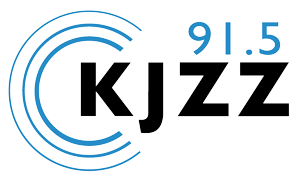 Utilities in Arizona are offering payments in exchange for control over customers' thermostats at times when the power grid is under strain. Pictured: a smart thermostat in the home of a TEP customer.
Utilities in Arizona are offering payments in exchange for control over customers' thermostats at times when the power grid is under strain. Pictured: a smart thermostat in the home of a TEP customer.Utilities in Arizona are offering payments in exchange for control over customers' thermostats at times when the power grid is under strain to reduce demand and prevent blackouts. This story originally aired on KJZZ in May. Read the full article below.
 VIEW LARGER Irina Levin adjusts her Google Nest smart thermostat.
VIEW LARGER Irina Levin adjusts her Google Nest smart thermostat. There’s a shiny, wifi-enabled Google Nest thermostat mounted on the wall of the hallway in Irina Levin’s home in Tempe. There’s nothing particularly noteworthy about Levin’s air conditioning system, except for the way her utility company, Salt River Project, sometimes uses it.
“They can take control of our thermostat,” Levin says. She laughs when she says it — the concept sounds a little spooky.
Six or seven times throughout the summer and fall on exceptionally hot days, Levin gets an email letting her know SRP is going to override her thermostat settings. First, the utility remotely turns the temperature down a little during the day to pre-cool Levin’s house. Then, in the late afternoon, when the weather gets really hot and the grid is under a lot of strain, SRP dials her thermostat up — about four degrees hotter than she would usually set it — so her AC stops blowing at full-blast.
“Sometimes we’re just not home, so it’s not really a thing,” Levin says, “But if we’re home, I’ve never under those circumstances been like, ‘no, no, this is too hot.’”
SRP does give her the option to take control of the thermostat again and turn the AC back up if she wants to, but she usually waits to do that until the conservation event is over. SRP allowed her to enroll with the smart thermostat brand of her choice. She got a $50 bill credit when she signed up for the plan two years ago and gets a $25 credit on her bill for each year she stays enrolled.
SRP began its “Bring Your Own Thermostat” energy plan as a pilot in 2017 and opened it to all customers in 2020. The utility now has 100,000 thermostats enrolled in the program.
SRP spokesperson Casaundra Donahoe said, during occasional conservation events, turning the temperature up in all of those households now allows the utility to shed up to 125 megawatts of demand at a time.
“Which is enough to power around 50,000 homes, depending on their energy usage,” Donahoe said. “It really helps us not to have to activate other energy resources on the grid because it takes longer, it costs more money.”
SRP is not alone — Arizona’s other major utilities, Arizona Public Service and Tucson Electric Power, also offer these smart thermostat demand-response programs to household customers. And the utilities offer similar incentive plans to their industrial customers.
The utilities are trying to keep up with skyrocketing demand. Arizona’s population is growing, and so is its energy-intensive data center industry. More drivers are charging electric vehicles at home. Meanwhile, climate change is driving longer and more intense summer heat waves, forcing air conditioners to work overtime.
The utilities have seen record-high peak loads during the last few summers. And SRP projects peak demand will climb 50% higher over the next decade.
Traditionally, when utilities plan for growth, they think about building more and more power plants until they know they can provide on days when loads are highest, said Michael Webber, Energy Chair in the department of mechanical engineering at the University of Texas at Austin.
“We build this whole system to meet that peak demand, and that’s really expensive because, on average, we use the grid like 50% of the time because we don’t have it that hot all the time,” Webber said.
But if utilities were not prepared to meet the highest possible demand and there was too much strain on the system, they would risk blackouts.
The odds of that happening are extremely slim. But the situation would be catastrophic – a 2023 study in the journal Environmental Science and Technology found a multi-day power outage during one of Phoenix’s intense heatwaves could result in nearly 13,000 deaths.
“There’s real risk in not having enough supply for the grid,” Webber said.
So it makes sense for utilities to not only consider ways to turn on more power supply, but also to look for ways to turn down demand, Webber said. Smart thermostat technology offers an easy way to do that.
“It’s really just a few hours of a few days of the year and the benefits are really tremendous,” Webber said.
Smart thermostat demand-response programs are a good fit for Arizona, where air conditioning is one of the biggest sources of household energy use during the summer. But nationwide, more and more utilities are adopting the technology, said Jessie Guest with EnergyHub, the company that created the software Arizona’s utilities use to manage their smart thermostat programs. Guest said EnergyHub’s clientele has grown to include about 80 utilities since launching its software less than a decade ago.
“We’re in Arizona, California, now Oregon, we’re in the Midwest, we’re in Florida, New England,” Guest said.
Guest said the Phoenix-area utilities’ programs are among the largest that EnergyHub manages.
Even so, with about 100,000 enrolled devices each, only a minority of SRP and APS customers are enrolled in these programs. SRP has about 1.1 million customers, and APS has about 1.4 million.
Webber argues even more utilities ought to be adopting this technology, and said those that have the programs should double down on getting more households to take part.
“This is such an obvious, low-hanging fruit to balance the grid in a cheap way and so I feel like we need a lot more of that,” Webber said.
However much it would cost to pay out incentives to hundreds of thousands of customers, he said, would still be much cheaper than building new power plants and paying for the fuel to run them on the few days of the year when the grid is under the most strain. And he thinks customers would buy into the idea.
For Levin, a little bit of cost savings was a perk, but when she signed up for SRP’s program she was also thinking about the bigger sustainability picture.
“I was like, ‘this costs me nothing, it gets me a tiny financial incentive, and they’re trying to not run out of juice at times when the stress on the system is the highest and it just seems like a reasonable way for them to do that,’” Levin said.
Even after a few brutally hot Arizona summers, she’s still enrolled.


By submitting your comments, you hereby give AZPM the right to post your comments and potentially use them in any other form of media operated by this institution.